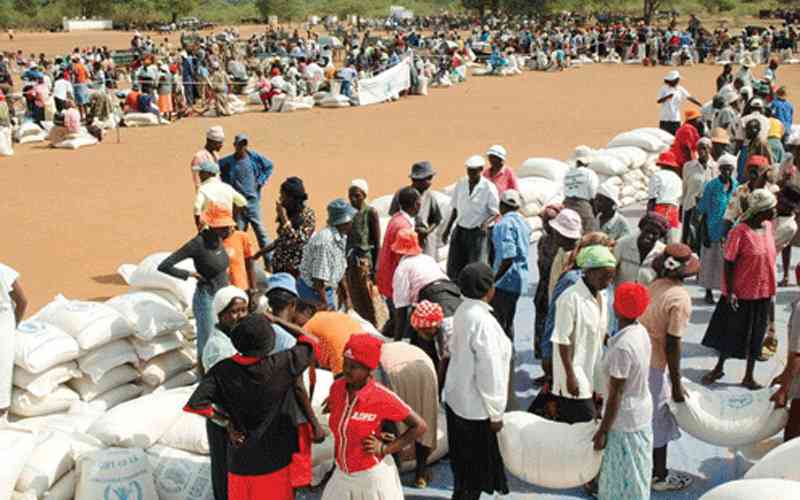
FOOD handouts and free inputs have been over-used to address poverty and food insecurity in most developing countries, yet providing a ready market for existing commodities could be a better solution.
In communities where local food like indigenous chickens, goats, sheep, small grains and wild fruits like baobab are major socio-economic drivers, farmers always struggle to sell these commodities.
Instead of bringing food from elsewhere, government and development agencies can make a difference by providing a ready market for local food.
Instead of benefiting local food producers, cash transfers often benefit supermarkets and manufacturers of processed food which cannot adequately substitute indigenous food.
Where communities wait for any buyer to show up haphazardly and buy commodities for low prices, communities lose collectively.
When farming communities are reaped off by middlemen, their poverty and food insecurity increases and the whole problem becomes the burden of government through food imports and social welfare programmes. Strengthening local markets can be a more sustainable solution in averting market-induced poverty.
The market as a financial model
As is the case in most African countries, when a financial model focuses on a few commodities like cocoa, cotton, wheat and tobacco, farmers and communities who do not produce these commodities are excluded from related financial models.
- Open letter to President Mnangagwa
- Feature: ‘It’s worse right now than under Mugabe’: Sikhala pays the price of opposition in solitary cell
- Masvingo turns down fire tender deal
- Human-wildlife conflict drive African wild dogs to extinction
Keep Reading
For instance, communities that specialise in small grains and tubers like yams are left to find their own finance while those who grow maize and wheat benefit from government and bank finance.
This has the effect of creating an unequal society where those with access to finance because they grow what are considered staples, benefit while those specialising in marginalised crops are left to source their own financing.
Although unrecognised and undocumented, viable mass food markets across Africa have given birth to unique Afro-centric home-grown financial models that speak to the majority.
A market that enables a farmer to meet the costs of production and remain with a profit, is as good as a finance model.
Evidence from African mass food markets shows that financing rural areas through the mass market increases the multiplier effect of money more than what happens if funding is given to farmers through formal banks without taking into account market dynamics.
Using the market for credit ratings
Having adopted Western financial systems, African countries have, for many decades, struggled to contextualise imported financial models which have remained largely for the urban elite.
However, African mass markets have been demonstrating capacity to build home-grown financial models.
For instance, where banks are worried about lending money to people with no formal credit history, mass food markets can easily direct financiers in terms of who is eligible to receive a loan and for which commodity.
Farmers who bring commodities to the market are often known and can be eligible to receive loans, while those not participating cannot do so ahead of regular market actors.
While this can be an example of a viable agricultural finance model, another variation of this model can be targeted financing informed by the market calendar. In most cases, traders order commodities as per demand, informed by market trends.
That way, financiers can allow the market to be an assessor of the farmer in ways that are about financing the crop not the farmer.
Part of what makes African mass food markets resilient is that they create spaces for face-to-face meetings rather than formal financial institutions where a decision to give or deny someone a loan is made by an aloof risk committee based on paperwork presented by the loan applicant with no room for face-to-face discussion between the bank and potential borrower.
Broader knowledge base and nutrition
What is also emerging from the diversity of food in mass food markets is that African food has its own knowledge base which is different from imported food whose knowledge base has been embedded in formal education systems like schools and agricultural colleges.
For instance, knowledge on indigenous food is confined to some farmers, communities and traders who specialise in trading these foods like small grains, yams and indigenous vegetables.
Those who produce and trade in indigenous food acquire the knowledge better than those who read textbooks about the food.
One of the major challenges in Western countries is that the distance between consumers and food producers is increasing but in African countries, mass food markets increase interaction between consumers and food producers.
Besides increasing the knowledge base, this also increases nutrition security as consumers are able to access diverse natural food.
- Charles Dhewa is a proactive knowledge broker and management specialist







